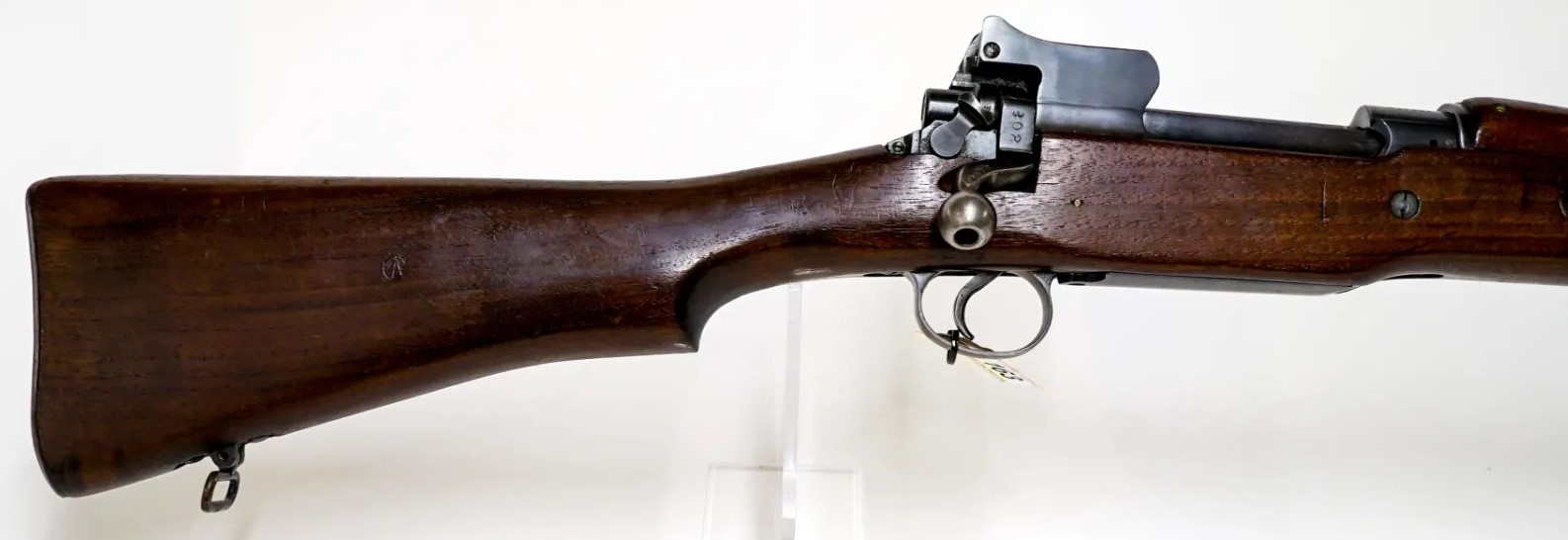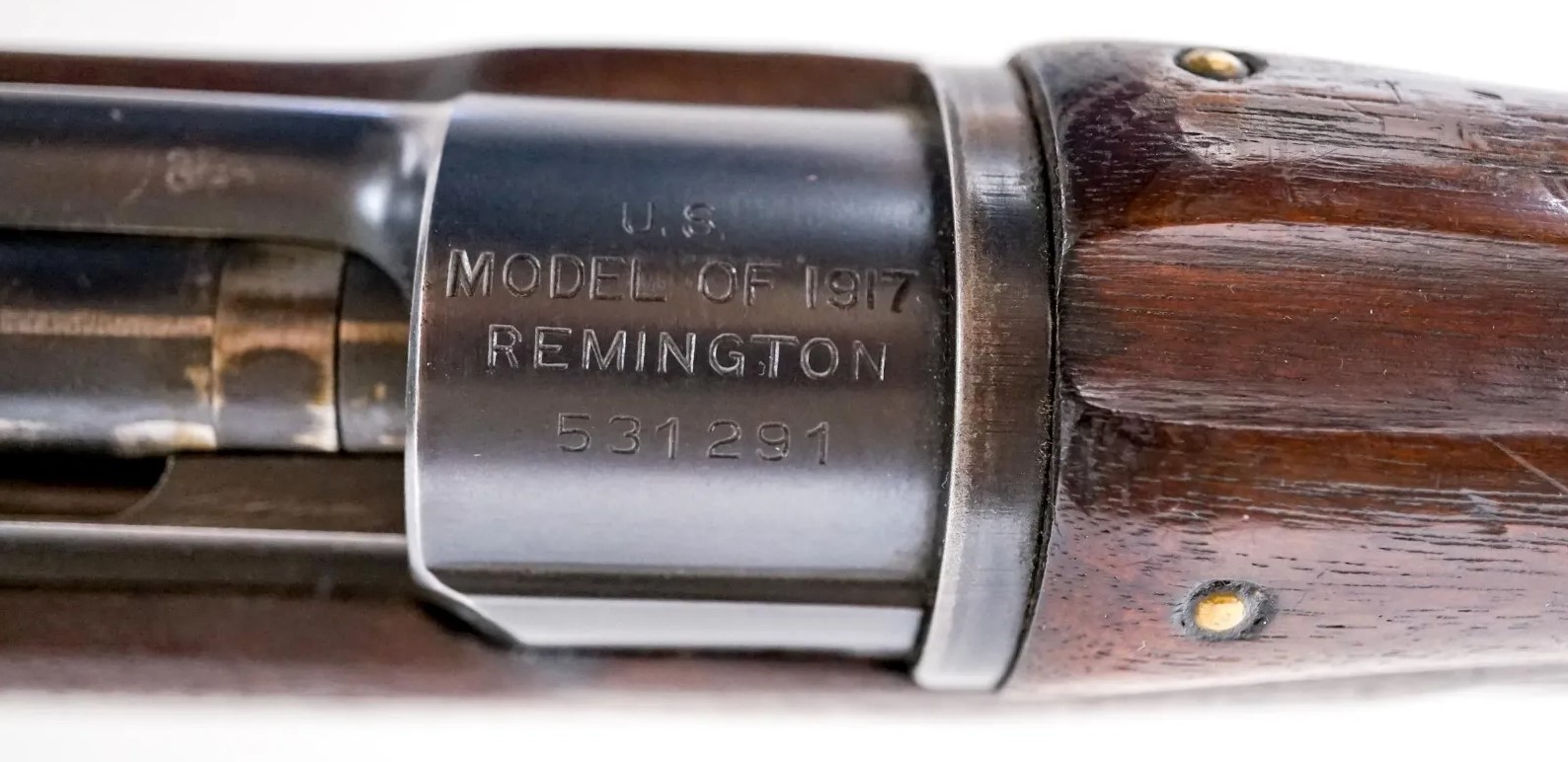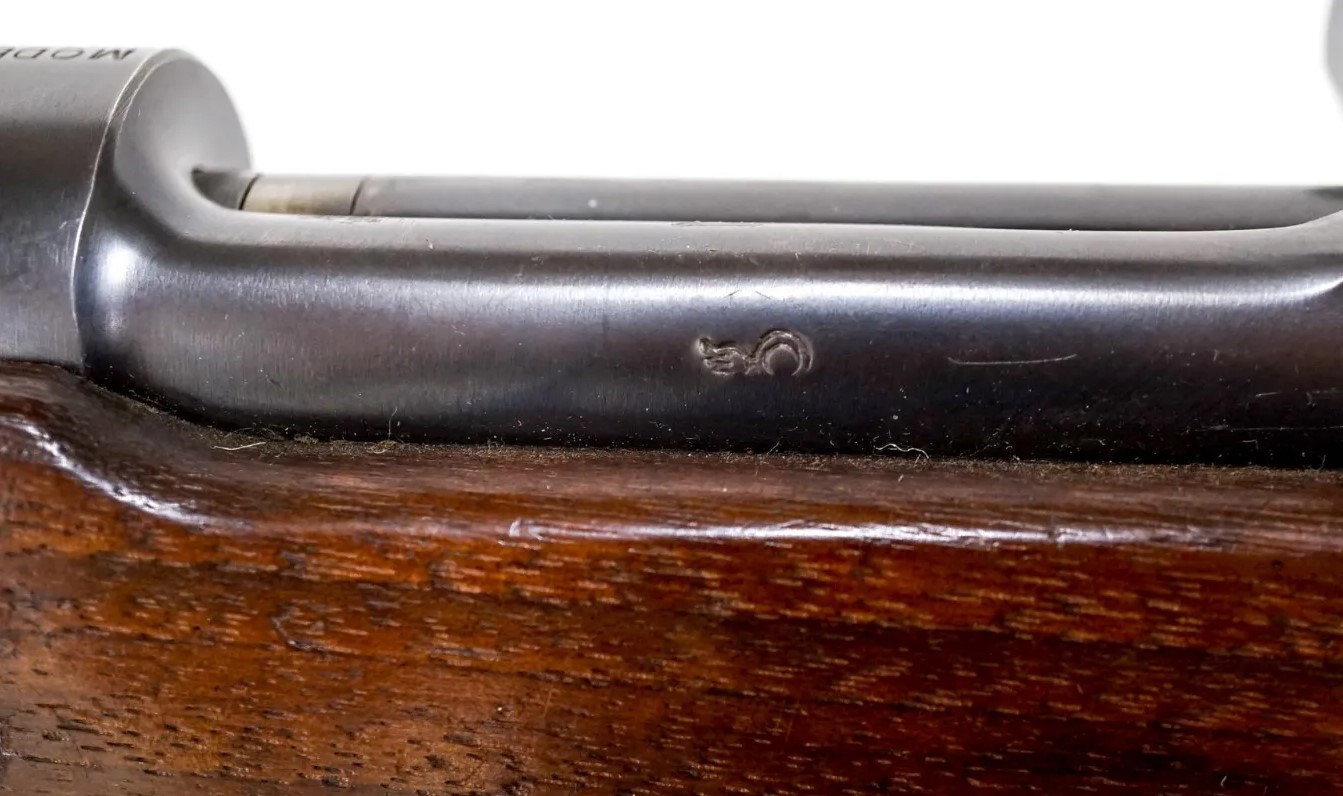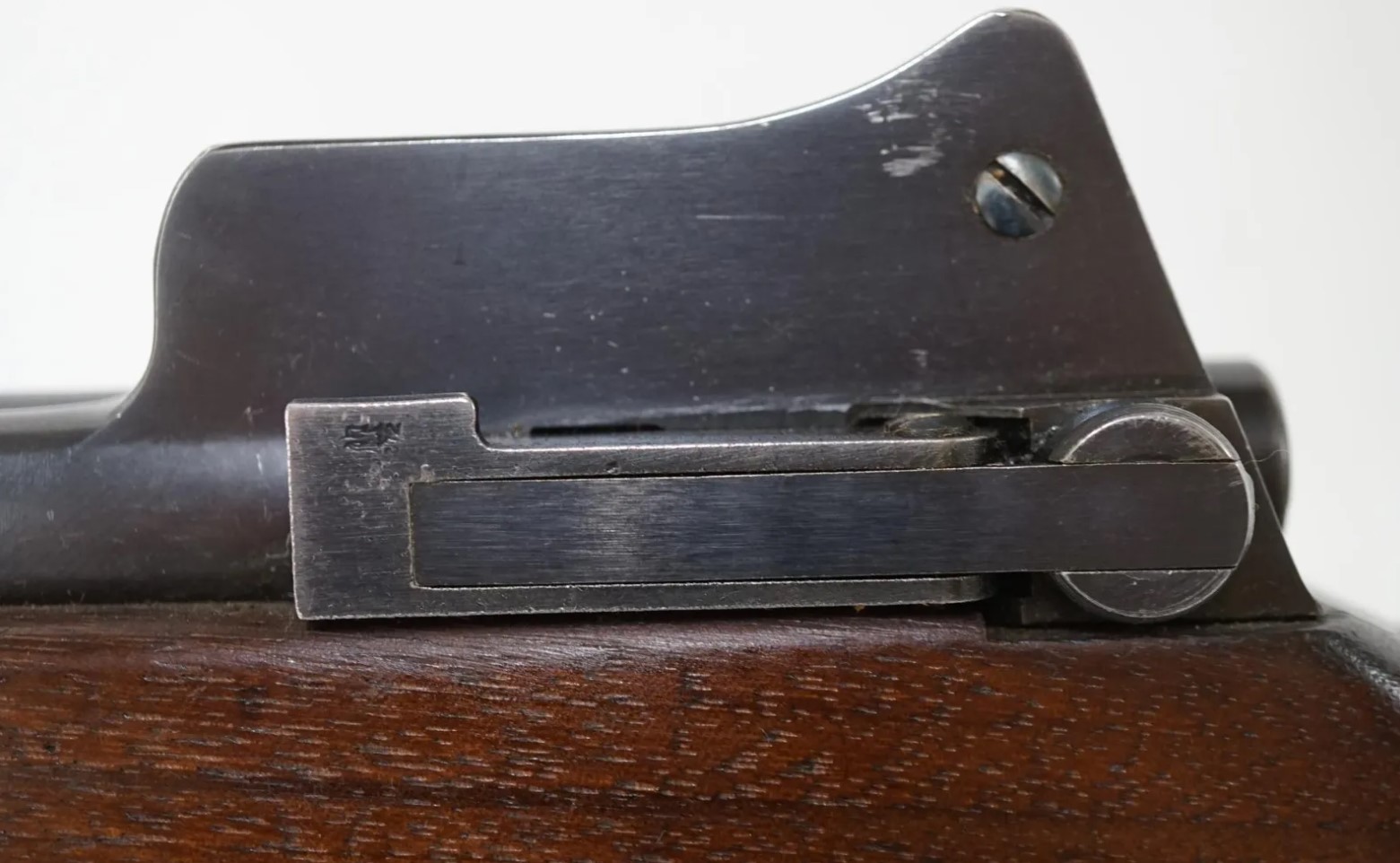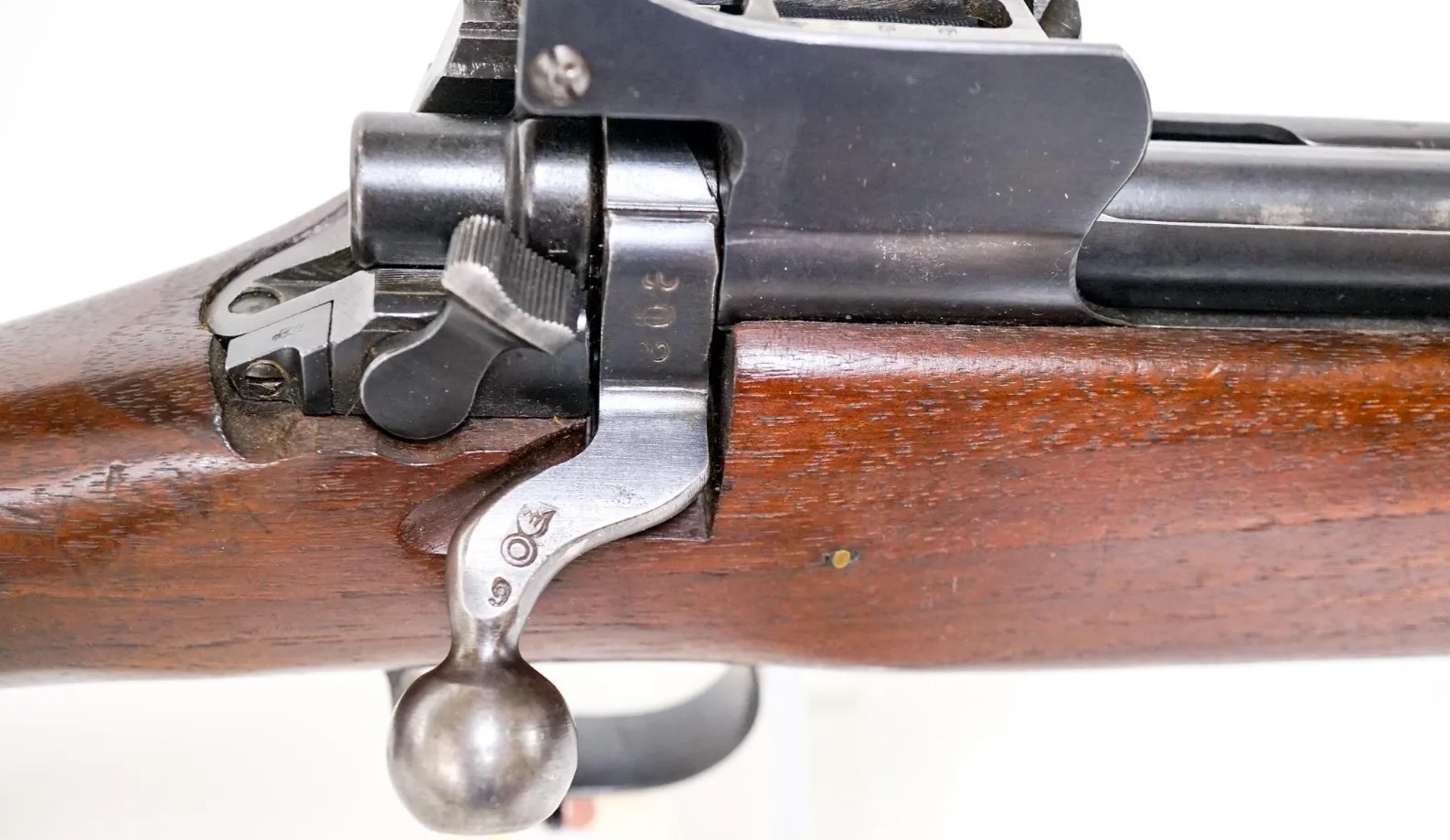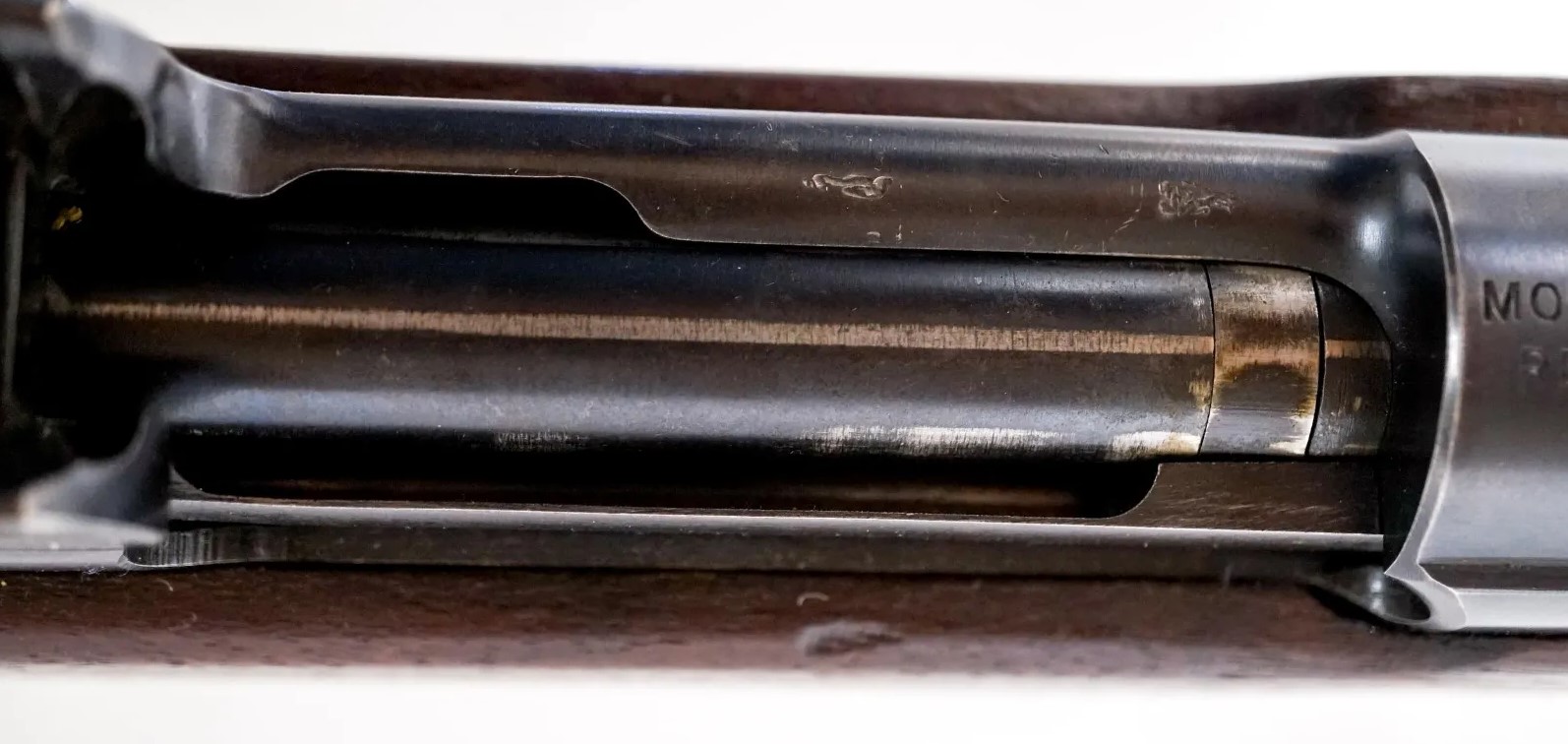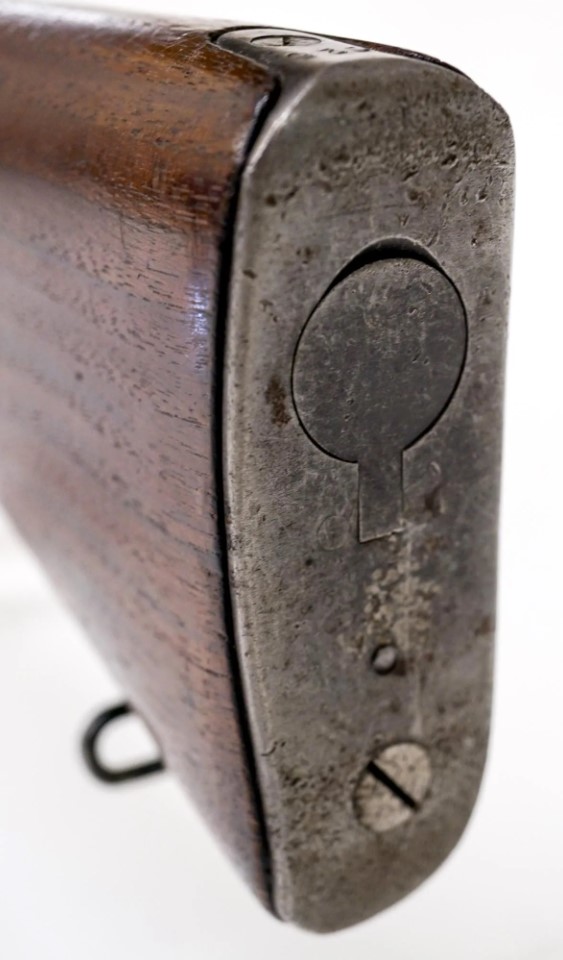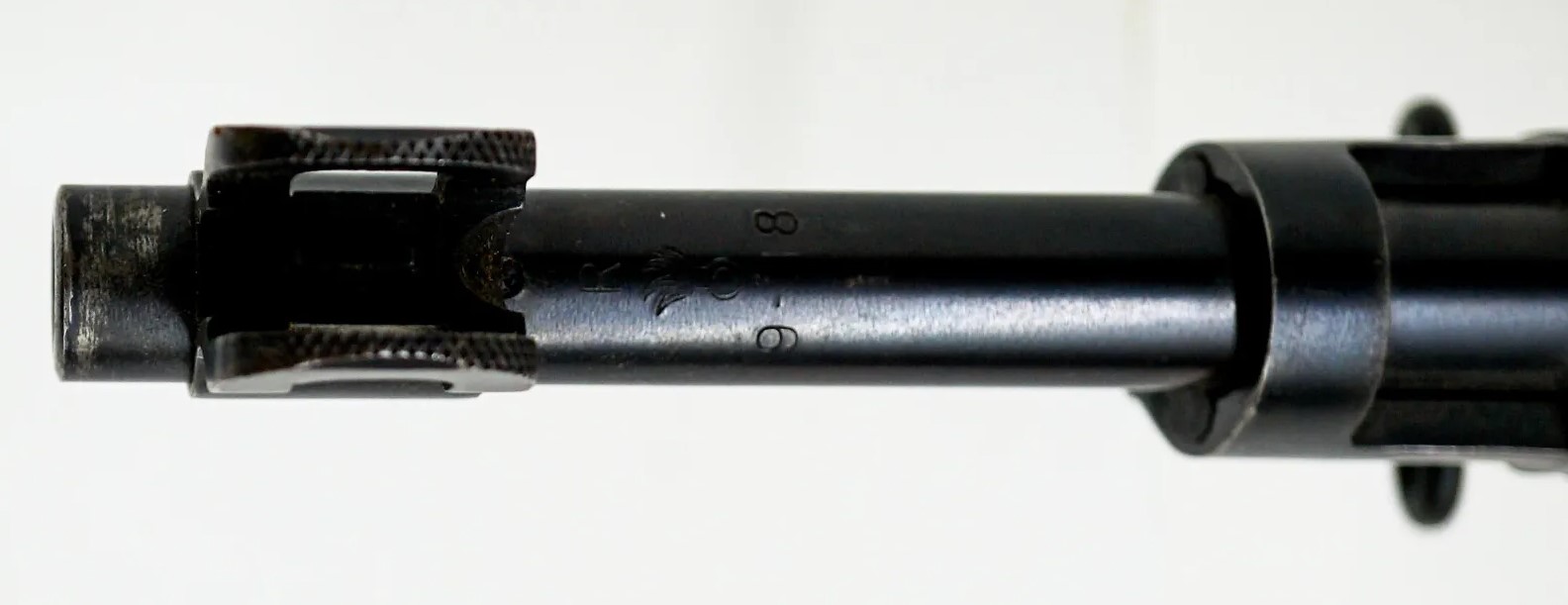Description
Mint & original hard to find Remington M17!
Before World War I, the British had the Short Magazine Lee–Enfield (SMLE) as their main rifle. Compared to the German Mausers or U.S. 1903 Springfield, the SMLE’s .303 rimmed cartridge which was originally a black powder cartridge, was ill-suited for feeding in magazine or belt-fed weapons & the SMLE was thought to be less accurate than its competition at longer ranges. The long-range accuracy of the German 7×57mm Mauser Model 1895 in the hands of Boer marksmen during the Boer War (1899 -1902) made an impression on the British Army & a more powerful, modern rifle was desired. Thus, even though improved Lee–Enfield variants (the SMLE) & .303 British Mark VII ammunition with pointed (spitzer) projectiles entered service after the Boer War in 1910, a committee was formed to develop an entirely new design of rifle & cartridge. The starting point was to copy many of the features of the Mauser system & the rifle was developed at the Royal Small Arms Factory at Enfield arsenal in the United Kingdom.
This development named the Pattern 1913 Enfield or P13, included a front locking, dual lug bolt action with Mauser type claw extractor as well as a new, powerful rimless .276 Enfield cartridge. The design carried over a Lee–Enfield type safety at the rear of the action & a bolt that cocked on closing to ease unlocking of the bolt during rapid fire. An advanced design for the era, of aperture rear sight & a long sight radius were incorporated to maximize accuracy potential. Ease of manufacture was also an important criterion. However, the onset of World War I came too quickly for the UK to put it into production before the new cartridge could be perfected.
As it entered World War I, the British had an urgent need for rifles & contracts for the new rifle were placed with several arms companies in the United States. They decided to ask these companies to produce the new rifle design in the old .303 British chambering for convenience of ammunition logistics.
The new rifle was termed the “Pattern 14”. In the case of the P14 rifle, Winchester & Remington were selected. A third manufacturer, Eddystone Arsenal – a subsidiary of Remington – was tooled up at the Baldwin Locomotive Works in Eddystone, Pennsylvania. Thus, three variations of the P14 & M1917 exist, labeled “Winchester,” “Remington” or “Eddystone”.
Made in Oct 1918 as marked on the barrel, this is an excellent example of a Remington M17 & only 545,541 rifles were produced compared to more than double this number at Eddystone.
When the U.S. entered the war in 1917, it had a similar need for rifles. The Springfield Armory had delivered approximately 843,000 M1903 Springfield rifles, but due to the difficulties in production, rather than re-tool the Pattern 14 factories to produce the M1903 Springfield, it was realized that it would be much quicker to adapt the British design. Although it might have been faster to retain chambering for the .303 British military cartridge, the design was modified for the US 30-06 Springfield cartridge to simplify ammunition logistics.
The Enfield design was well-suited to the .30-06 Springfield as it was a big, strong action & was originally intended to employ a long, powerful, rimless bottlenecked cartridge. Accordingly, Remington Arms Co. altered the design for caliber .30-06 Springfield, under the close supervision of the U.S. Army Ordnance Department.
This was formally adopted as the U.S. Rifle, Caliber .30, Model of 1917. In addition to Remington’s production at Ilion, New York & Eddystone, Pennsylvania, Winchester produced the rifle at their New Haven, Connecticut plant. Considering it was the unofficial service rifle, a combined total more than twice the 1903’s production were produced.
Eddystone made 1,181,908 rifles – more than the production of Remington (545,541 rifles) & Winchester (465,980 rifles) combined. Although standardization with interchangeable parts was intended, early Winchester rifles (including the first five-thousand with a simple ‘W’ on the receiver rather than Winchester) used slightly differing parts, causing interchangeability issues with the rifles produced by Remington & Eddystone until Winchester corrected the problem in later production.
Design changes were few. The stripper clip feed, internal box magazine, bolt face, chamber & rifling dimensions were altered to suit the .30-06 Springfield cartridge & the US pattern 5-round stripper clips, the stock was slightly redesigned, lightening it somewhat & the volley fire sights on the left side of the weapon were deleted.
The markings were also changed to reflect the model & caliber change. A 16.5-inch blade bayonet, the M1917 bayonet was produced for use on the rifle. It was later used on several other small arms including the M97 & M12 trench shotguns.
It is believed by many military historians that Sgt. York used one an M17 when he won his Medal of Honor in France.
These rifles are highly valued by collectors, especially in this outstanding condition & good examples are steadily increasing in value.
Do your own research & you will know if this is for you. These are the only photos we have at this point so please view them carefully & make your decision based on what you see as they form the main description & override all written information.
This is coming from the US as part of our next shipment & is available for pre-sale with deposit.
This must be one of the nicest M17’s we have seen so be the one to add this to your collection.
We think we have described it accurately & correctly but do not claim to be infallible so if we have got anything wrong, it is unintentional & are happy for feedback from people who know more than we do.
Whilst we check these out for serviceability, the warranty has expired & this is sold on an ‘as is’ basis. As with all used guns, we recommend you have this checked by a suitably qualified person prior to shooting.
We have a pretty unique refund policy on our collectable guns whereby we will refund your money if it is not as described when you receive it. Just let us know before you decide to send it back.
Call for shipping cost to your dealer.



